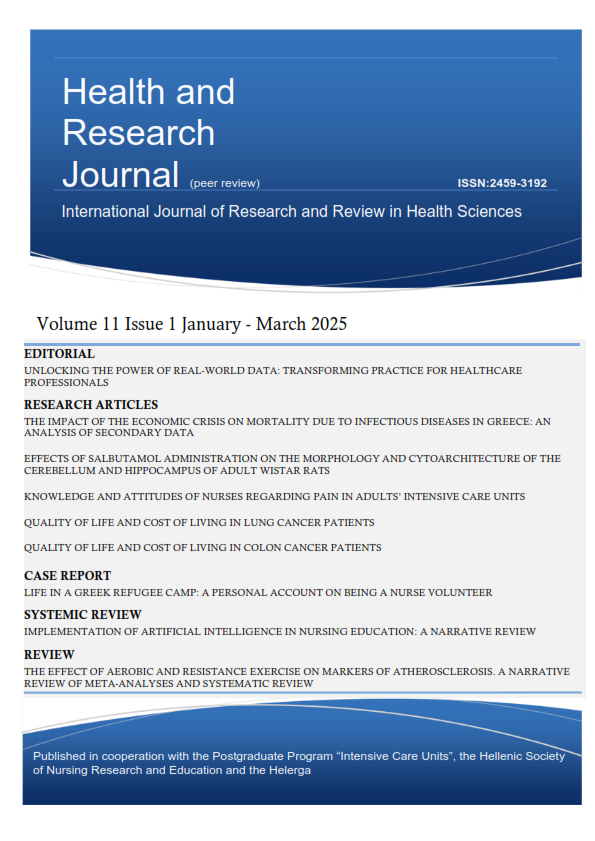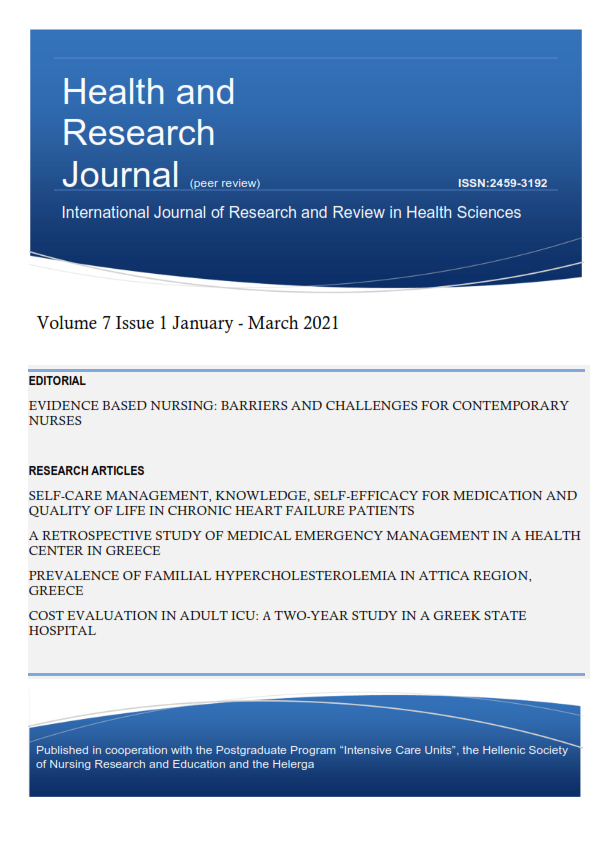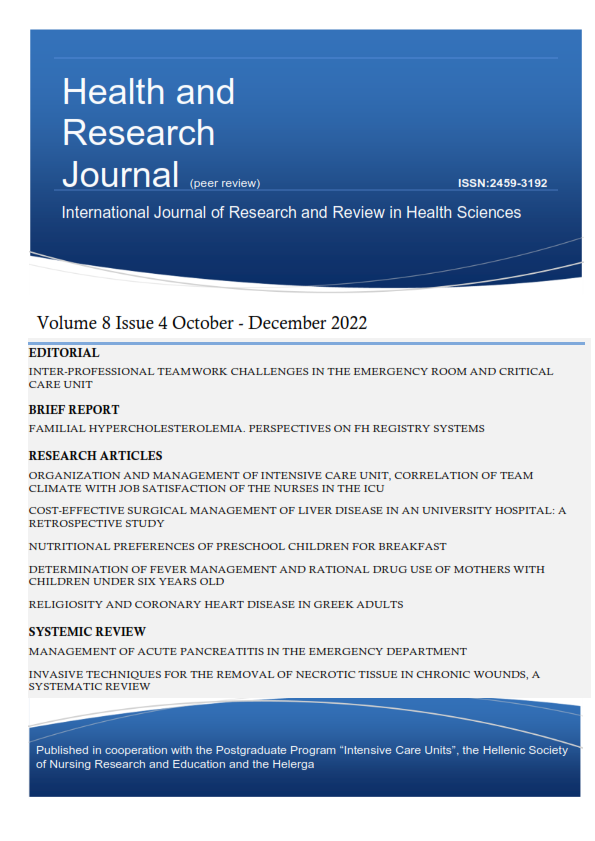Knowledge and attitudes of nurses regarding pain in adults' intensive care units

Abstract
Background: Pain is a significant aggravating factor in the adult Intensive Care Unit (ICU). Bibliographically it is usually mentioned as the fifth vital point. Pain in ICUs is difficult to assess due to the health status of the patients admitted to it.
Material and Method: In the present survey a total sample of 63 nursing staff was received by the method of interview. To collect data, an anonymous questionnaire that captures the basic demographics and the questionnaire "Knowledge and Attitudes Survey Regarding Pain" of Ferrell and McCaffery were used. Also, a consent form for participation in the research was distributed as well.
Results: The knowledge score ranged from 27.6 to 82.8 points with a mean of 50.2 points. It appeared to be a statistically significant finding between knowledge of nursing staff and their marital status (p = 0.043) and basic nursing education (p = 0.010). Singles and those with a university degree turned out to have higher knowledge scores.
Conclusion: Lack of knowledge of the nursing staff regarding pharmacology was found. Data gathered in the present study may be useful for the reorientation of
educational programs at undergraduate level and to provide feedback for lifelong programs of employed nurses.
Article Details
- How to Cite
-
Papanikita, M., & Pavlatou, N. (2025). Knowledge and attitudes of nurses regarding pain in adults’ intensive care units. Health & Research Journal, 11(1), 29–41. https://doi.org/10.12681/healthresj.38086
- Section
- Original Articles
Copyright notice:
The journal "Health and Research Journal" reserves the rights for copyright of the content of the website and also the copyright of the articles published.
By virtue of their appearance in this journal, the articles are free to be used for non-commercial purposes. However, the articles cannot and must not be used in anyway, published elsewhere or modified without any reference to the author and the first publication of the article.





